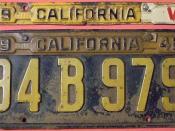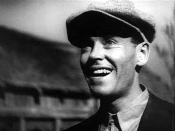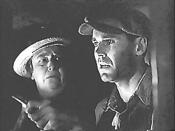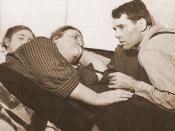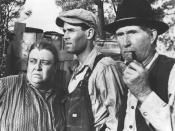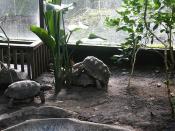Picture this: It's a scorching , sunny midsummer day. You're on a journey to a new place, and it's taking an extremely long time to get there. Half way to your destination though, a trouble arises, and you get knocked back to your starting point. Finally, you make it to the end of your trip, only to find that it's worse than the place you started at. Millions of people went through this in the 1930s while migrating to California for its supposed greatness for dust bowl families. A turtle also went through the same struggle in the novel "The Grapes of Wrath", by John Steinbeck. The turtle and the migrants both went through the same struggle of a long journey, along with many hardships, and found an end worse than the beginning.
The Joad family and the turtle both had a very lengthy trip that they had to endure.
Although a highway may not seem like very far across for us, the trek for the turtle's heavy shell, and short legs is a very long one. Extremely comparable, the Joad family, along with Jim Casy, makes the long journey from Oklahoma to California all in one truck. As you can guess, the time it would take for the turtle to reach the other side of the highway is very much like the days it took for the Joad family to reach California.
Another way the migrants and turtle's story is comparable is the hardships they encountered during their journey. The migrants had to first buy a vehicle to get to California. Salesmen, with knowledge that the tenants had no clue of pricing, found any used-car they could, and took anything profitable out of it, then sold it to a tenant for an excessive price. After the tenants bought a vehicle, they also had to sell off most of their valuables to pawners, since they would have no room to bring them with. The pawners would also cheat money out of the tenants, because they know that the tenants have no room to bargain. Also, once the used cars and trucks would break down on the road, salesmen would again try to sell them overpriced parts. Very much alike, the turtle gets his body on top of the ledge and starts across the highway, only to be knocked back off by a passing vehicle. After he starts back up again, Tom walks by and chooses to pick him up, further taking the turtle away from where he needs to go.
The final way that the turtle and migrants stories are connected is what was at the end of their journey. For the turtle, the end of his journey was the other side of the highway. Once he reached that though, another trip would begin, probably to another place somewhere very far. The tenants ending in California was also not a very happy one. When they reached California, they were met with poverty instead of wealth. They found it hard to find work, and even when they did, money and food were very scarce, due to the underpayment of employees from the overload of migrants coming to California.
Steinbeck's intent of the use of the chapter about the turtle was to show people another perspective of the migration of dust bowl families in the 1930s. From the way that many people can intertwine the two stories I believe he did an excellent job by connecting them with the use of the long journey, the numerous hardships, and the end of the trip.
